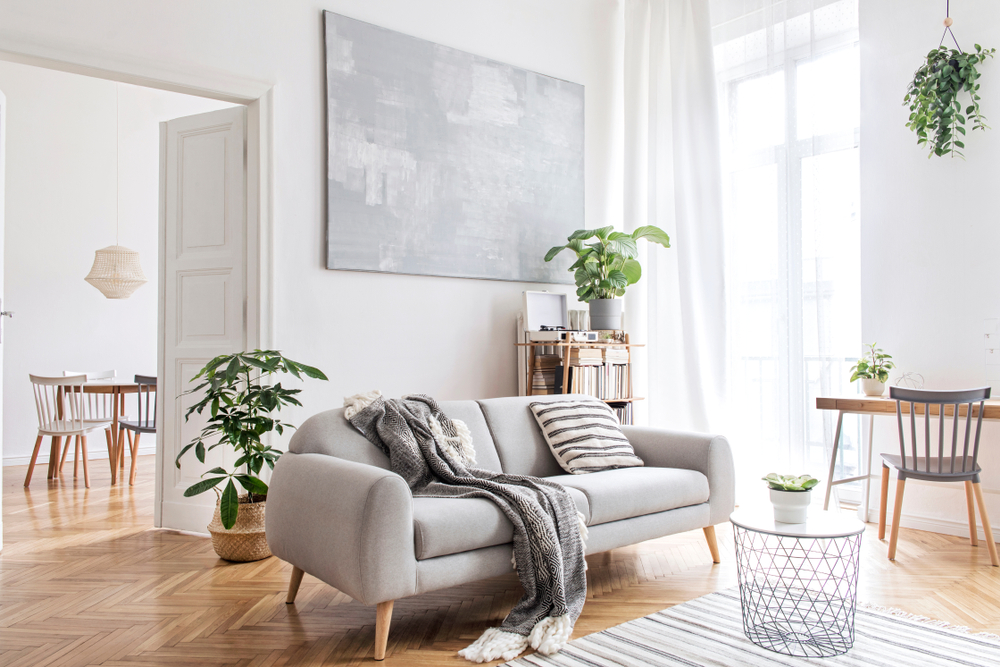Color Schemes in the Main Line: from Room to Room and Floor to Floor

When you’re planning a big redecoration project, it’s important to consider how all of your rooms will look together. There are lots of choices when designing color schemes for your house. You can set up each room to echo themes from other rooms to achieve a coordinated look, or you might want to pair individual rooms with a palette that best suits their functions. Let’s explore where different strategies work best, and why you might want to choose one strategy or another.
Southeastern Pennsylvania is home to many beautiful examples of traditional colonial architecture. This means houses are built with compartmentalized spaces for specific purposes such as dining, living, and preparing food. The more compartmentalized the spaces in your house, the more freedom you have to create a separate palette for each room. This allows you to use a variety of colors and emphasize each room’s unique personality.
If you live in a loft with large spaces, consider the use of white or bright colors that will emphasize the feeling of openness. Adding an accent wall in a bright color is another great way to unify a loft space, especially if you coordinate it with matching appliances, tiles, and dishtowels in the kitchen, or pillows in the living room.
Designing Room by Room—How to Create Cohesion and Encourage Individuality
Even when rooms are diverse, it’s helpful for different spaces throughout a house to echo themes. For example, if a house’s foyer is open and white and the kitchen is suffused with warm yellows, incorporate whites and warm yellows in the living and dining rooms. Using in-between rooms to make a visual transition helps lead visitors from different environments while maintaining the sense of a coordinated color scheme.
Pulling subtle colors from accessories in one room to paint the walls in another is a great way to create cohesion. Choose curtains, pillows, or rugs with the same color as a neighboring room—for example, a blue rug in a beige living room adjacent to a blue-toned kitchen—to tie otherwise different rooms together.
Bedrooms provide another great opportunity to create a comfortable home inside a home for each member of the family that showcases individual color and design. Kids in particular often want different colors in their rooms to make them stand apart.
Designing Floor by Floor—Coordinating or Contrasting Palettes
When you coordinate colors across floors, you bring separate spaces together to make a whole house. Take the basement: people tend to think of the basement as a secondary room, and automatically opt for neutral colors like beige or white. However, if you coordinate the colors of a finished basement with the main living space of the house, it turns the basement into being a part of the main house, rather than apart from it, and that makes you more likely to spend time there.
Create a subconscious emotional effect by leveraging different color experiences between floors. For example, if you choose darker colors for the first floor and brighter colors on the second, you can create a lightening feeling as you move upwards into the house.
For common spaces used for hosting or entertaining, often on the first floor, you could keep the palette elegant, formal, and traditional with grays and other muted tones. On the upper floors, opt for brighter or more exuberant shades of the colors downstairs, making them unique yet still fitting with the overall color scheme.
Whether you want to paint a room, floor, or the entire interior of your home, Nolan has the background and the expertise to do it right. We can help you coordinate spaces so your house flows from room to room in a natural way, or guide you to the colors you need to make the individual statements you envision in each room. We love to hear your ideas, and work with you to get your desired results. Fill out our online form and take advantage of our free estimate; we’d love to learn what we can do for you!

